 |
 |
 |
 |
 |
<< subjects
>> |
 |
 |
01.-
Basque Beginnings
01.1
THE OSTATUAK
Basque hotels, or ostatuak, that have been well established, throughout
the west, for one and a half centuries preceded today's Basque clubs.
On the east coast, New York's ostatua founded by Valentin Aguirre,
served as the reference point through which many Basques arriving
in the US during the first half of the 20th Century passed. However,
the Plaza Hotel of San Juan Bautista (California), operated in the
1850's by Julian Ursua, was the first establishment predating the
ostatua, for which there are records. In 1866 the Aguirre Hotel
was set up in San Francisco by Juan Miguel Aguirre, who had fought
on the losing side in the First Carlist War. He emigrated in 1845
to Uruguay, and from there, in 1849, to California.
|
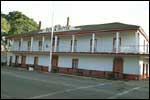
|
 |
01.2
A RESPONSE TO THE NEEDS
In a country being shaped by immigration, the ostatua was present
from the mid 19th century. It was a response to the various waves
of young Basques moving to the western US. As a testament to this,
the December 30, 1893, issue of the Los Angeles newspaper California'ko
Eskual Herria carried advertisements for at least five Basque hotels
in Los Angeles, one in San Diego, two in Kern City, one in San Francisco,
and another in San Jose, all in the Basque language. |
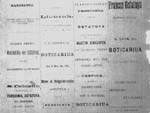
|
|
01.3
KALIFORNIAN EUSKARAZ
In the late 19th century, San Francisco and Los Angeles already
had Basque communities of certain importance, in whose ostatuak
Basque was the language commonly used. In this American Euskal Herria,
there arose publications such as Escualdun Gazeta, entirely in the
Basque language, established in 1885 by lawyer Martin Biscailuz,
or California'ko Eskual Herria, also in Basque, established in 1893
by journalist Jean-Pierre Goytino. Where hotels are concerned, research
carried out by Californian historian Jeronima Echeverria reveals
that there have been at least 304 Basque boarding houses and hotels
set up throughout the US in the 19th and 20th centuries.
|
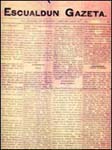
|
|
01.4
HOME AWAY FROM HOME
Unquestionably, the ostatua was a key reference point for many of
the early generations of Basques coming to the US. There were many
communities in the western regions with one or more of these establishments.
Some survived, either having reorganized their operations or continuing
simply as restaurants. Many of the meeting-point functions associated
with the hotel of yesteryear are currently found in the Basque clubs.
|
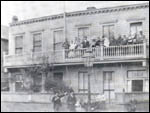
|
|
01.5
CREATING CLUBS
There are nearly fifty such clubs in the US. The oldest of which
is the Central Vascoamericano, today the Euzko Etxea of New York,
founded in 1913 and currently situated in Brooklyn. In the west,
in 1907 there were efforts made to set up a club in Stockton. In
1914 the Basque Club of Utah was founded in Ogden, while in 1924
the first Zazpiak Bat Club was started in San Francisco. In 1938
the Basques in the Bakersfield area founded the Kern County Basque
Club. Even though there are Basques in each of the fifty states,
according to the most recent census, Basque clubs are only found
in New York, Florida, California, Nevada, Idaho, Oregon, Utah, Washington,
and Wyoming. However, there is a significant Basque population in
Arizona, Colorado, Connecticut, Montana, New Jersey, and New Mexico.
|
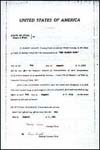
|
|
|
 |
 |
 |
|
|





